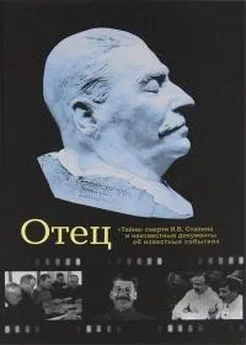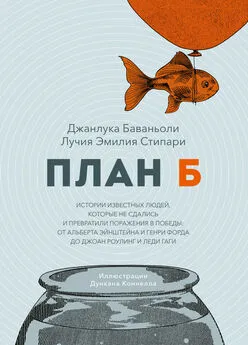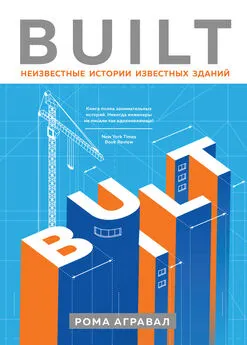Рома Агравал - Built. Неизвестные истории известных зданий [litres]
- Название:Built. Неизвестные истории известных зданий [litres]
- Автор:
- Жанр:
- Издательство:Литагент 5 редакция «БОМБОРА»
- Год:2019
- Город:Москва
- ISBN:978-5-04-101252-6
- Рейтинг:
- Избранное:Добавить в избранное
-
Отзывы:
-
Ваша оценка:
Рома Агравал - Built. Неизвестные истории известных зданий [litres] краткое содержание
Built. Неизвестные истории известных зданий [litres] - читать онлайн бесплатно ознакомительный отрывок
Интервал:
Закладка:
Роб Томас, фонтан энциклопедических знаний из библиотеки Института инженеров-строителей, который находил мне самые непонятные источники и всегда находил время послушать мой бред. Дебра Фрэнсис из библиотеки Института инженеров-строителей за помощь.
Марк Миодауник, чья книга «Stuff Matters» послужила мне вдохновением (она по-прежнему лежит у меня на прикроватной тумбочке): ты самый добрый парень на свете и так много для меня сделал. Тимандра Харкнесс – за поддержку и знакомство с удивительными друзьями по переписке в NeuWrite, которые комментировали и критиковали мой труд.
Джон Паркер, Дин Рикс, Рон Слейд. Вся команда «Осколка». Директора WSP – за невероятные десять лет обучения и роста. Дэвид Холмс и Гордон Кью из Interserve. Джон Пристланд, Майк Бертон, Питер Сатклифф и Дэрран Ливер из AECOM: все мои начальники, которые меня очень поддерживали – я знаю, что я «необычный» работник.
Дэвид Мондрилл, Джо Харрис, Мэй Чиу, доктор Кристина Берр, Джеймс Диксон, Пуджа Агравал, Нири Арамбепола, Эмма Боус, Крис Госден, Джереми Паркер, Карл Ратцко и Крис Кристо, дорогие друзья и коллеги (и сестра), которые читали главы из этой книги, проверяли и помогали.
Инженеры и ученые, организации и предприятия, которые вдохновили меня выйти на свет и рассказать людям о том, чем мы занимаемся. Спасибо за предоставленную мне возможность писать и выступать. Я с оптимизмом смотрю в будущее нашего общего дела: на его инновации, его влияние на все, что нас окружает.
Спасибо моей семье – всем родственникам, что есть у меня в мире, – моим бабушкам и дедушкам, тетям, дядям, двоюродным братьям и сестрам, племянникам и племянницам и моей свекрови, которые всегда поддерживали меня и терпеливо ждали, когда закончится этот огромный проект. Спасибо моим друзьям, с кем я не так часто виделась в последнее время, – теперь мы все наверстаем. Я знаю, что вы всегда со мной. Моим близким, которых уже нет в живых, – я скучаю.
Моим родителям, Хему и Линетт Агравалам, моей сестре Пудже Агравал: с чего начать? Спасибо за то, что всегда говорили мне, что я добьюсь всего, чего хочу, усердным трудом, за конструктор «Лего», за науку и наши путешествия, за лучшее образование, за сложные задачи и вопросы и за всю вашу любовь.
И, наконец, спасибо моему мистеру Флирту, или Бадри Вадавадиги, который вел меня – и иногда пинал и кричал – все четыре года написания этой книги, который прочел эти слова столько раз, сколько их не читал никто, за то, что напоминал мне, что я смогу, когда я сама в это не верила, за то, что отчитывал меня, когда меня одолевала прокрастинация, за хорошую обратную связь, за название книги, за то, что заставил мечтать масштабнее, и за всю твою любовь. Пусть у кого-то будет больше мостов дня.
Рома Агравал, февраль 2018
Источники
Addis, Bill. Building: 3000 Years of Design Engineering and Construction . University of Michigan: Phaidon, 2007.
Agrawal, Roma. ‘Pai Lin Li Travel Award 2008 – Stress Ribbon Bridges.’ The Structural Engineer , Volume 87, 2009.
Agrawal, R., Parker, J. and Slade, R. ‘The Shard at London Bridge.’ The Structural Engineer , Volume 92, Issue 7, 2014.
Ahmed, Arshad and Sturges, John. Materials Science in Construction: An Introduction . Routledge, 2014.
Allwood, Julian M. and Cullen, Jonathan M. Sustainable Materials – Without the Hot Air: Making Buildings, Vehicles and Products Efficiently and with Less New Material . UIT Cambridge, 2015.
Balasubramaniam, R. ‘On the corrosion resistance of the Delhi iron pillar.’ Corrosion Science , Volume 42, Issue 12, 2000.
Bagust, Harold. The Greater Genius? A Biography of Marc Isambard Brunel . The University of Michigan: Ian Allan, 2006.
Ballinger, George. ‘The Falkirk Wheel: from concept to reality.’ The Structural Engineer , Volume 81, Issue 4, 2003.
Barton, Nicholas and Stephen Myers. The Lost Rivers of London: their effects upon London and Londoners, and those of London and Londoners upon them . Historical Publications, Limited, 2016.
British Constructional Steelworks Association. A Century of Steel Construction 1906–2006 . British Constructional Steelworks Association, 2006.
Blockley, David. Bridges: The Science and Art of the World’s Most Inspiring Structures . Oxford: Oxford University Press, 2010.
Brady, Sean. ‘The Quebec Bridge collapse: a preventable failure.’ The Structural Engineer , 92 (12), 2014 (2 parts).
Brown, David J. Bridges: Three Thousand Years of Defying Nature . London: Mitchell Beazley, 1993.
Bryan, Tim. Brunel: The Great Engineer . Ian Allan, 1999.
Clayton, Antony. Subterranean City: Beneath the Streets of London . London: Historical Publications, 2010.
Cross-Rudkin, P. S. M., Chrimes, M. M. and Bailey, M. R. Biographical. Dictionary of Civil Engineers in Great Britain and Ireland, Volume 2 : 1830–1890.
Crow, James Mitchell. ‘The concrete conundrum.’ Chemistry World , 2008.
Davidson, D. ‘The Structural Aspects of the Great Pyramid.’ The Structural Engineer , Volume 7, Issue 7, 1929. (Paper read before the Yorkshire Branch at Leeds on 7 February 1929).
Dillon, Patrick (writer) and Biesty, Stephen (illustrator). The Story of Buildings: From the Pyramids to the Sydney Opera House and Beyond . Candlewick Press, 2014.
European Council of Civil Engineers. Footbridges – Small is beautiful . European Council of Civil Engineers, 2014.
Fabre, Guilhem, Fiches, Jean-Luc, Leveau, Philippe, and Paillet, Jean Louis. The Pont Du Gard: Water and the Roman Town . Presses du CNRS, 1992.
Fahlbusch, H. ‘Early dams.’ Proceedings of the Institution of Civil Engineers Engineering History and Heritage , Volume 162, Issue 1, 1 Feb 2009 (19–28).
‘The Falkirk Wheel: a rotating boatlift.’ The Structural Engineer , 2 January 2002.
Fitchen, John. Building Construction Before Mechanization . MIT Press, 1989.
Giovanni, Pier and d’Ambrosio, Antonio. Pompeii: Guide to the Site . Electa Napoli, 2002.
Gordon, J. E. Structures: or why things don’t fall down . Da Capo Press, 2009.
Gordon, J. E. The New Science of Strong Materials: or why you don’t fall through the floor . United States of America: Penguin Books, 1991.
Graf, Bernhard. Bridges that Changed the World . Prestel, 2005.
Hanley, Susan B. ‘Urban Sanitation in Preindustrial Japan.’ The Journal of Interdisciplinary History , Volume 18, No. 1, 1987.
Hibbert, Christopher, Keay, John, Keay, Julia and Weinreb, Ben. The London Encyclopaedia . Pan Macmillan, 2011.
Holland, Tom. Rubicon: The Triumph and Tragedy of the Roman Republic . Hachette UK, 2011.
Home, Gordon. Old London Bridge . Indiana University: John Lane, 1931.
Khan, Yasmin Sabina. Engineering Architecture: The Vision of Fazlur R. Khan . W. W. Norton, 2004.
Lampe, David. The Tunnel . Harrap, 1963.
Landels, J. G. Engineering in the Ancient World . Berkeley and Los Angeles: University of California Press, 1978.
Landau, Sarah Bradford and Condit, Carl W. Rise of the New York Skyscraper 1865–1913 . New Haven and London: Yale University Press, 1999.
Lepik, Andres. Skyscrapers . Prestel, 2008.
Levy, Matthys and Salvadori, Mario. Why Buildings Fall Down: How Structures Fail . United States of America: W. W. Norton, 2002.
Mathewson, Andrew, Laval, Derek, Elton, Julia, Kentley, Eric and Hulse, Robert. The Brunels’ Tunnel . ICE Publishing, 2006.
Mays, Larry, Antoniou, George P. and Angelakis, N. ‘History of Water Cisterns: Legacies and Lessons.’ Water . 5. 1916–1940. 10.3390/w5041916.
McCullough, David. The Great Bridge: The Epic Story of the Building of the Brooklyn Bridge . Simon & Schuster, 1983.
Mehrotra, Anjali and Glisic, Branko. Deconstructing the Dome: A Structural Analysis of the Taj Mahal . Journal of the International Association for Shell and Spatial Structures, 2015.
Miodownik, Mark. Stuff Matters: Exploring the Marvellous Materials at Shape Our Man-Made World . Penguin UK, 2013.
Oxman, Rivka and Oxman, Robert (guest-edited by). The New Structuralism. Design, engineering and architectural technologies . Wiley, 2010.
Pannell, J.P.M. An Illustrated History of Civil Engineering . Univerity of California: Thames and Hudson, 1964.
Pawlyn, Michael. Biomimicry in Architecture . RIBA Publishing, 2016.
Pearson, Cynthia and Delatte, Norbert. Collapse of the Quebec Bridge, 1907 . Cleveland State University, 2006.
Petrash, Antonia. More than Petticoats: Remarkable New York Women . Globe Pequot Press, 2001.
Poulos, Harry G. and Bunce, Grahame. Foundation Design for the Burj Dubai – The World’s Tallest Building . Case Histories in Geotechnical Engineering, Arlington, VA, August 2008.
Randall, Frank A. History of the Development of Building Construction in Chicago Safety in tall buildings . Institution of Structural Engineers working group publication, 2002 Salvadori, Mario. Why Buildings Stand Up . United States of America: W. W. Norton and Company, 2002.
Santoyo-Villa, Enrique and Ovando-Shelley, Efrain. Mexico City’s Cathedral and Sagrario Church, Geometrical Correction and Soil Hardening 1989–2002 – Six Years After .
Читать дальшеИнтервал:
Закладка:
![Обложка книги Рома Агравал - Built. Неизвестные истории известных зданий [litres]](/books/1149525/roma-agraval-built-neizvestnye-istorii-izvestnyh.webp)
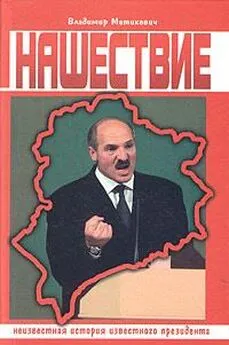

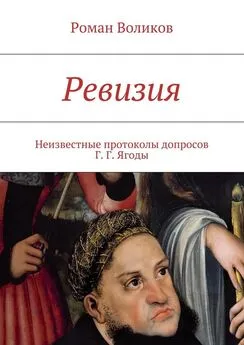
![Крис Пристли - Страшные истории дядюшки Монтегю [litres]](/books/1060837/kris-pristli-strashnye-istorii-dyadyushki-montegyu-lit.webp)
![Андрей Домановский - Загадки истории. Крымское ханство [litres]](/books/1066586/andrej-domanovskij-zagadki-istorii-krymskoe-hanst.webp)
![Орсон Кард - Звездные дороги [Истории из вселенной Эндера] [litres]](/books/1079765/orson-kard-zvezdnye-dorogi-istorii-iz-vselennoj-e.webp)
